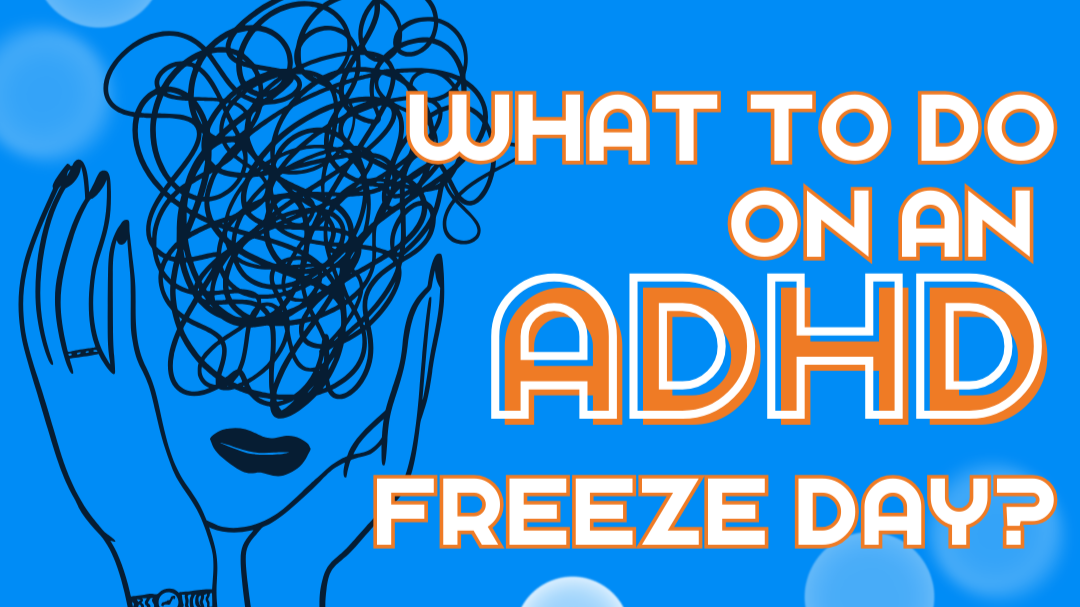
Understanding ADHD Paralysis: When the Brain Goes Into Freeze Mode
For individuals with ADHD, the experience of paralysis can feel like a complete "brain crash." It's as though the cognitive processes that typically guide action, decision-making, and focus simply shut down. This phenomenon, commonly known as ADHD paralysis, isn't a matter of laziness or lack of willpower—it's a neurological response to overwhelm.
What Happens During ADHD Paralysis?
When someone with ADHD experiences freeze mode, their brain is struggling to cope with a flood of sensory, emotional, or cognitive input. Here's what typically occurs:
- Sensory Overload: The brain becomes overwhelmed by stimuli, whether that's an influx of thoughts, emotions, external noise, or information. This can lead to a sensation of being utterly "frozen" and unable to process further input.
- Difficulty Processing Information: With executive functioning compromised, organising thoughts or figuring out what to do next becomes a Herculean task. The brain's ability to sequence steps or prioritise tasks falters.
- Feeling Stuck and Unable to Proceed: The person often feels immobilised, unable to take even the smallest action, which reinforces feelings of frustration and anxiety.
This "brain crash" leads to a cycle of inaction and heightened anxiety, as the inability to address stressors compounds the very stress that caused the shutdown in the first place.
The Different Types of ADHD Paralysis
ADHD paralysis can manifest in several forms, depending on the underlying trigger. Understanding these variations can help in recognising and addressing them:
- Mental Paralysis
- Choice Paralysis (Analysis Paralysis)
- Task Paralysis
Why Does ADHD Paralysis Happen?
ADHD paralysis is rooted in the brain's struggle to regulate dopamine, a neurotransmitter crucial for motivation, focus, and decision-making. When the brain perceives a task as overwhelming, complex, or unrewarding, dopamine levels plummet, making it even harder to engage.
Additionally, the amygdala, the brain's stress-response centre, becomes over-activated during periods of high stress or emotional intensity. This can suppress the prefrontal cortex, which governs executive functions like planning and problem-solving, leading to a "freeze" response.
The Science Behind ADHD Paralysis
Neurologically, ADHD is characterised by dysregulation in neural networks that govern attention, reward, and executive functioning. The prefrontal cortex, which plays a critical role in organising tasks and controlling impulses, is underactive in individuals with ADHD. This underactivity is compounded by an overactive amygdala, which hijacks cognitive resources during stressful moments. The result? A brain that is both overstimulated and unable to process information effectively.
Dopamine deficiency plays a significant role as well. Dopamine is responsible for transmitting signals between neurons in areas of the brain that control attention, motivation, and decision-making. In ADHD, these dopamine pathways are less efficient, meaning that the brain requires more effort to perform tasks that neurotypical brains might handle more automatically. This inefficiency can exacerbate the overwhelm and make it difficult to transition from intention to action.
Another factor is the imbalance in the brain's default mode network (DMN) and task-positive network (TPN). The DMN, associated with daydreaming and mind-wandering, often dominates in ADHD brains, even when focused task-oriented action is needed. Shifting from DMN to TPN activity—necessary for completing tasks—is slower and less consistent in ADHD individuals, making them more prone to freezing under pressure.
Breaking the Cycle: Strategies for Overcoming ADHD Paralysis
While ADHD paralysis can feel insurmountable, there are ways to break free from its grip. Here are some actionable strategies:
- Break Tasks into Tiny Steps: Focus on the smallest possible action you can take, such as writing one sentence or clearing one item from your desk.
- Set Timers for Short Bursts: Use the Pomodoro technique or work for just five minutes to build momentum.
- Create External Structure: Use planners, checklists, or apps to offload cognitive demands and organise your day.
- Seek Immediate Rewards: Pair tasks with a motivating reward to boost dopamine levels.
- Use Movement to Reset: Physical activity like stretching or walking can help "unstick" the brain and reset focus.
- Ask for Help: Exgternalising decisions or seeking support can reduce the mental load.
- Reduce Choices: Limit options to simplify decision-making and avoid choice paralysis.
- Practice Self-Compassion: Recognize that ADHD paralysis is a neurological response, not a character flaw.
The Power of Understanding ADHD Paralysis
By recognising ADHD paralysis for what it is—a brain-based response to overwhelm—we can move away from self-blame and toward strategies that work. Whether it's task paralysis, mental paralysis, or choice paralysis, the key is to approach it with curiosity, patience, and practical tools.
For individuals with ADHD, understanding their unique neurological wiring is the first step toward thriving in a world that often demands more executive functioning than the brain is naturally equipped to handle. By raising awareness of ADHD paralysis and its impact, we can foster a culture of empathy and innovation that better supports neurodiverse individuals.
